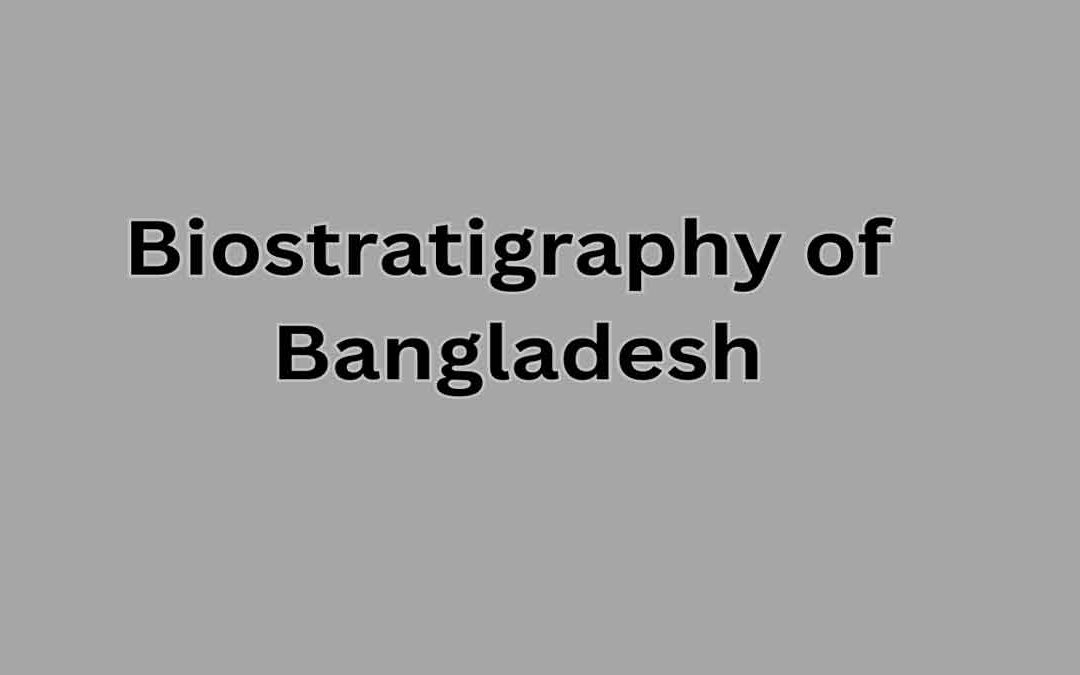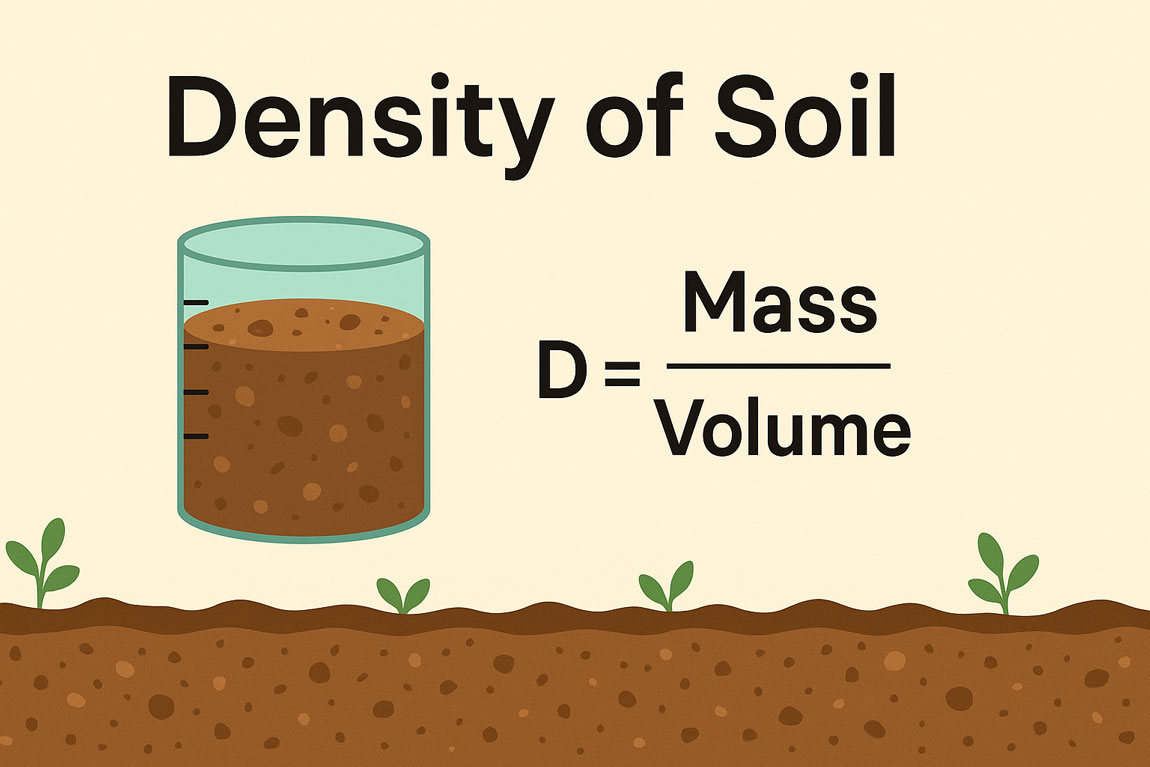The Cenozoic succession of Bangladesh has been differentiated into a number of biostratigraphic units, viz., assemblage zone based on first assemblage demarcation (FAD) line, last assemblage demarcation (LAD) line, acme, and ranges of various marker palynotaxa in the different formations.
The detailed biostratigraphy of different lithological units such as tura formation, sylhet limestone formation, kopili shale formation, jenam formation, renji formation, bhuban formation, bokabil formation, tipam sandstone formation, girujan clay formation, and dupitila formation are discussed below:
Tura Formation:
Only one outcrop of the tura formation in the takerghat hillock, Sunamganj district, is known from Bangladesh. It consists of faulted southward-dipping palaeogene rocks detached from the southern edge of the Shillong Plateau.
Considering the maximum development of the tura formation in the type area of the Garo Hills, only the middle and upper part of the formation can be recognized here. The palynological assemblage of tura formation comprises 73 species belonging to 50 genera and is characterized by:
- Frequent occurrence of coarsely reticulate pollen grains of the genus proxapertites.
- Abundance of monocolpate pollen of palm affinity.
- Highly ornamented pteridophytes like corrugatisporites, striatriletes and lycopodiumsporites etc.
- Presence of robust-spinose pollen related to the genus spinizonocolpites of nypa affinity.
- Restricted occurrence of Inapertisporites laevigata, spinizonocolpites echinatus, tricolpites levies, lakiapollis ovatus, ericipites quadratus, litosphaeridium arundum, L. siphoniformis, dyadoporonites grandiporus etc.
Three palynological zones, viz., dandotiaspora telonata, palmidites maximus, and proxapertites microreticulatus, have been distinguished corresponding to the lower and upper parts of the middle horizon and upper horizon of the tura formation, respectively, in Bangladesh.
Dandotiaspora telonata Zone:
It represents the lower part of the middle horizon of the tura formation. The palynotaxa that were found in abundance are araucariacites australis, dandotiaspora plicata, palmidites maximus, and proxapertites microreticulatus. The zone is marked by the restricted occurrence of the corrugatisporites turpitus.
The elements of the overlying palmidites maximus zone, such as couperipollis brevispinosus, are completely missing here. This zone is the lateral continuation of the dandotiaspora telonata zone recognized by Sah and Singh (1974) in the middle part of the tura formation.
Palmidites maximus Zone:
It represents the upper part of the middle horizon. The palynotaxa that are found in abundance are Couperipollis brevispinosus and Proxapertites assamicus. The zone is marked by the restricted occurrence of Couperipollis brevispinosus.
The elements of the overlying proxapertites microreticulatus zone, such as Stephanocolpites tertiarus and Lygodiumsporites eocenicus, are completely missing here. This zone is a lateral continuation of the palmidites maximus zone recognized by Sah and Singh (1974) in the middle part of the tura formation.
Proxapertites microreticulatus Zone:
It represents the upper part of the tura formation. The palynotaxa that are found in this horizon are stephanocolpites tertiarus, lygodiumspotites eocenicus, proxapertites assamicus, dandotiaspora telonata, D. plicata, etc. The restricted palynotaxa found here are stephanocolpites tertiarus, lygodiumspotites eocenicus.
From the above data, the zones are comparable to the proxapertites operculatus zone recognized by Germeraad et al. (1968) from some pantropical zones recognized in South America, Africa, and Asia. The zones range in age from Palaeocene to early Eocene.
Sylhet Limestone Formation:
The Sylhet Limestone Formation exposed on the Dauki Nala Section has tentatively been divided into two zones, namely
- Limestone of lower zone which is grey to light brown in colour, jointed, fractured, hard and fossiliferous containing Nummulites and Assilina and having an unconformable contact with overlying Kopili Formation.
- Limestone of upper zone which is light to dark grey in colour, weathering into brown around fractures and grades downward into siliceous type. It is also fossiliferous and interbedded with thin beds of light brown and bluish grey shales, clay, and brown sandstone unconformably underlying the Barail sandstone. In terms of palynotaxa, the Sylhet Limestone Formation is characterized by:
- Restricted occurrence of pollen grains of Chenopodiaceae and Amaranthaceae.
- Rare occurrence of reticulate pollen such as the genus Proxapertites.
- Frequent to abundant occurrence of dinoflagellates.
Two palynostratigraphic zones were recognized here, viz, Operculodium centrocarpum Zone for the lower part and Kopilisphaera eocaena Zone for the upper part.
Operculodium centrocarpum Zone:
This zone represents the lower part of Sylhet Limestone Formation. The major assemblages recovered from this zone are Kopilisphaera eocaena, K.ballaghatia sp, Operculodium centrocarpum, Homotrilibrium tenuispinosum, Cordosphaeridium fibrospinosus etc.
The restricted taxa, which are not present on the upper part, are Operculodium centrocarpum, homotrilibrium tenuispinosum, Cordosphaeridium fibrospinosus and Spiniferites sp.
Kopilisphaera eocaena Zone:
This zone represents the upper part of the Sylhet Limestone Formation. The major assemblages represented here are Kopilisphaera eocaena, Polyporina excellens, and Proxapertites microreticulatus, with the restricted occurrence of the latter.
Kopili Shale Formation:
The Kopili Shale Formation of Bangladesh is characterized by:
- Abundant occurrence of monocolpate grains with a few of tricolpate grains.
- Abundant presence of algal and fungal spores.
- A few species of bisaccate pollen were also recovered in this formation.
- A variety of dinoflagellate taxa.
On the basis of floral assemblage, the Kopili Formation has been distinguished as a lower Striatriletes susannae Zone and Palmidites maximus-Kopilisphaera ballaghatia Zone representing the upper part.
Striatriletes susaanae Zone:
The common taxa of this zone are Striatriletes susaanae, S. multicostatus, Khariasporites densus, Lycopodium palaeocenicus, Dandotiaspora telonata etc. The restricted occurrence of Striatriletes multicostatus, Khariasporites densus, Lycopodium palaeocenicus that demarcate this zone from the overlying Palmidites maximus-Kopilisphaera ballaghatia Zone.
Palmidites maximus-Kopilisphaera ballaghatia Zone:
It is represented by Kopilisphaera ballaghatia, Operculodium centrocarpum, Osmundacidites cephalus, Margocolpites complexum, Palmidites maximus, Striatriletes susannae etc.
The restricted taxa found in this zone that are:
Kopilisphaera ballaghatia, Operculodium centrocarpum, Osmundacidites cephalus and Margocolpites complexum.These two palynozones cited above are comparable with Verrucatosporites usmensis Pan tropical Zone of Germaraad et al. (1968) which is of Upper Eocene in age.
Jenam Formation:
It comprises the middle part of the Barail Group in Bangladesh. The Jenam Formation is characterized by:
- Frequent occurrence of Parkeriaceae spores.
- Occurrence of pollen tetrad, viz., Polyadopollenites multipartitus.
- Frequent presence of palmae pollen grains.
This stratigraphic interval has been recognized as Striatriletes susannae Zone.
Striatriletes susannae Zone:
It is represented by Striatriletes susannae, S. multicostatus, Cyathidites minor, Tricolpites crassireticulatus, Palmidites maximus, Polypodiisporites repandus, Lygodiumsporites eocenicus etc.
Renji Formation:
It is characterized on the upper part of the Barail Group. The Renji Formation is characterized by:
- Very frequent occurrence of smooth trilete spores.
- Abundant presence of striated Corrugatisporites and Parkeriaceae grains.
- Frequent presence of reticulate and verrucate tricolpate grains.
- Restricted occurrence of Favitricolpate complex and
- A lot of bisaccate pollen and algae remains.
The Renji Formation of Bangladesh has been further differentiated into two palynozones. These are lower Cyathidites minor Zone and upper Tricolpites crassireticulatus Zone.
Cyathidites minor Zone:
It is represented by the palynotaxa like Cyathidites minor, Dandotiaspora plicata, Striatriletes multicostatus, S. susannae, Stephanocolpites plicatus, Verrucolpites verrucus, Podocarpidites congoensis etc The restricted palynotaxa in this zone are Verrucolpites verrucus, Podocarpidites congoensis.
Tricolpites crassireticulatus Zone:
The common taxa of this zone are Tricolpites crassireticulatus, Palmaepollenites infrapuncta, Stephanocolpites tertiarus, Todisporites plicatus, Polyadopollenites multipartitus. The restricted taxa in this zone are Polyadopollenites multipartitus.
All the palynozones recognized in the Barail sediments of Bangladesh are comparable with Magnastrialetes howerdi of Pan tropical Zones of Germeraad et al. (1968).
Bhuban Formation:
The Bhuban Formation of Bangladesh is characterized by:
- Frequent occurrence of spinose monocolpate pollen related to palmae.
- Frequent presence of ribbed spores showing an affinity with family Parkeriaceae.
- Occurrence of tricolpate-triporate-polyporate grains.
On the basis of microfloral assemblage, productivity, and priority, this formation is distinguished as
Temporina globata Zone:
The common taxa in this zone are Temporina globata, Proxapertites microreticulatus, Foveotriletes pachyexinous, Polypodiaceasporites tertiarus, Pinuspollenites cognatus, Abiespollenites cognatus, etc.
Bokabil Formation:
The Bokabil formation of Bangladesh is characterized by:
- Frequent occurrence of striated pteridophytes spores of Parkeriaceae.
- Abundant presence of bisaccate pollen.
- A few species of algae and fungi are also present.
In the present research Polypodiaceaesporites tertiarus Zone is proposed to represent this formation. The major taxa in this formation are Striatriletes susannae, Pinuspollenites crestus, Abiespollenites cognatus, Polysphaeridium subtile, Palmaepollenites eocenicus, P. formosus, Nityanandaspora indica, Nymphaecidites spinosus, etc.
Tipam Sandstone Formation:
Since no palynological data could be obtained from this formation, this interval is marked here as Barren Zone.
Girujan Clay Formation:
The Girujan clay formation of Bangladesh is characterized by:
- Frequent occurrence of monocolpate palmae pollen.
- Total absence of dicot pollen grains.
- Presence of cingulate and corrugate spores.
This formation is distinguished as Bangladeshopollenites barishalensis Zone (Saha and Singh, 2000).
Bangladeshopollenites barishalensis Zone:
The constituent palynotaxa in this zone Bangladeshopollenites barishalensis, Eximispora indica, Concavisporites shariensis sp nov., Verrualetes baculatus, Palmaepollenites eocenicus, Concavisporites shariensis, Retipilonapites cf. Remusatis vivipara and Striatriletes sp.etc.
All the above-mentioned palynozones recognized in the Surma and Tipam Group of sediments are equivalent to crassoretitriletes vanraadshooveni pantropical zones by germarrad et al. (1968) of miocene in age.
Dupitila Formation:
The characteristic mioflora of dupitila formation are:
- Occurrence of smooth exine bearing Leiotriletes grains.
- Common occurrence of Palmaepollenites grains.
Dupitila formation is designated as Corrugatisporite sp. Zone (Saha and Singh, 2000).
Corrugatisporite sp. Zone:
The constituent major taxa in this horizon are corrugatisporites sp, nityanandaspora indica gen.et.sp.nov, palmidites assamicus, concavisporites shariensis sp.nov. and eximispora indica, etc.
This zone can be compared with echitricolporites spinosus Pan tropical Zones proposed by germaraad et al. (1968), which stands for Pliocene age.






